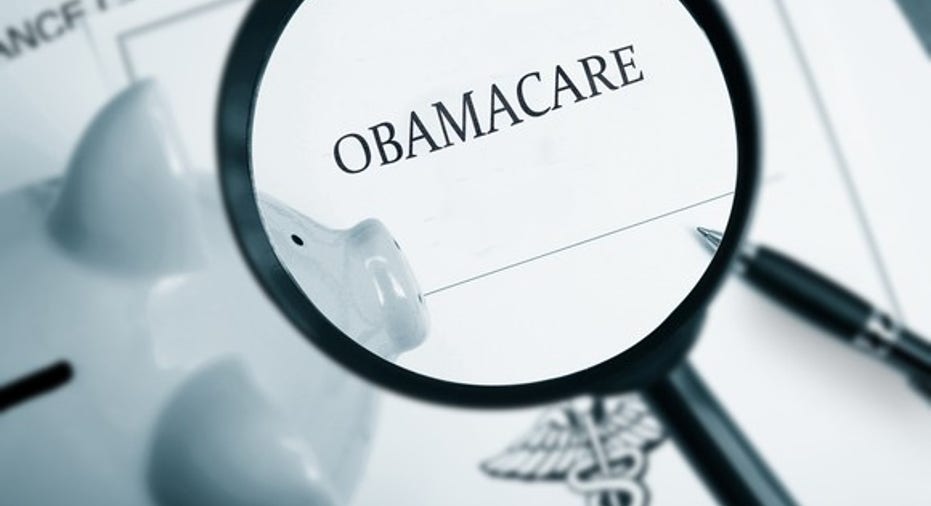Alice Rivlin: How to Create TrumpCare and Make it Great

In the campaign, President-elect Donald Trump vowed to repeal ObamaCare and replace it with “something great.” His campaign website said all Americans deserved high quality, affordable health care. As president, he has the opportunity to deliver on that promise — with a little help from Speaker Ryan and Republicans and Democrats (yes, Democrats) in both houses of Congress.
If the Great Dealmaker wants to show his skills and build an enduring legacy, he should start by brokering a deal that preserves the best aspects of ObamaCare, fixes its design flaws, and turns it into a sustainable program with his name on it. Putting this deal together will test the new president’s skills in the “art of the deal” as real estate never could.
Fortunately, the basic structure of the existing law features consumer choice among competing private health plans, which many Republican plans also espouse. This should give the framework strong appeal to market-oriented Republicans — once it no longer has President Obama’s name on it.
ObamaCare offers those who do not have affordable coverage from their employment or other sources a range of choices on electronic marketplaces and income-related subsidies through the tax system to help them pay for their chosen plan.
President-elect Trump said after his meeting with President Obama that he does not want to go back to the days when insurance companies could refuse coverage to people with pre-existing conditions, charge sicker people higher premiums, or cut people off when they got sick.
He also likes requiring carriers to keep young people on their parents’ insurance until they turn 26. But these popular features of current law, plus rules against charging older people more than triple the rate for younger ones made the Obamacare marketplaces difficult to sustain without repairs.
These features drove up premiums for younger healthier people, who tend to resist buying insurance anyway, and left insurance carriers offering plans on the exchanges with customers who were older and sicker (and therefore more expensive) than they expected.
Many carriers lost money, so they increased premiums or dropped out of the market. Sparsely populated rural areas with few health care providers — always a challenge in this vast country — often did not have enough potential enrollees to attract competing insurance carriers.
President Obama and candidate Hillary Clinton both recognized that flaws in the design of the program would require fixing even if Democrats won. Mandating that everyone have insurance and penalizing those who didn’t was supposed to keep the younger, healthier folks in the insurance pool, but the penalties were insufficient and mandates are always unpopular, not just with Republicans.
Republicans also complained that the law required covering benefits that not everyone needed (single men don’t want maternity coverage), did not allow bare-bones protection only against medical catastrophes, and did not give states flexibility to use their Medicaid funds for to fund innovative solutions to achieving broader insurance coverage.
If it is to be truly great, TrumpCare must avoid all or most of these pitfalls. The challenge for the new team will be to craft a deal that relaxes the age rules to make it more attractive for younger, healthier people to buy at least bare-bones insurance and gives them strong incentives to enroll without an actual mandate; allows insurance companies to make at least a modest profit by off-loading some of the costs of the very sick onto subsidized reinsurance or high risk pools; and gives people who live in sparsely populated rural areas more options at affordable cost.
Interstate compacts to broaden insurance pools across state lines might play a role in cracking the perennial problem of covering rural areas, and other Republican favorites, such as health savings accounts and medical malpractice reform, should also be part of the package. Giving states more flexibility in using Medicaid should be high priority, either by expanding the waiver process in existing law or by carefully crafting block grants with per capita caps and realistic growth rates.
Republicans want to repeal the taxes associated with ObamaCare, but a good Republican idea could be invoked to replace the lost revenue, namely capping the exclusion of employer-paid health insurance benefits from taxable income—a proposal made by Senator McCain in his presidential bid. This tax change would discourage extremely generous “Cadillac” health insurance plans (which encourage unnecessary health spending) and would fit with reform of the individual income tax to lower marginal tax rates.
The President-elect needs to act quickly to persuade Congress to replace ObamaCare at the same time it enacts repeal. If he allows immediate repeal accompanied with a vague promise of replacement later, he will have an unnecessary calamity on his hands. Not only will about 20 million people lose their current health insurance coverage, but the market for individual insurance is likely to implode, causing hardship to everybody who buys their own insurance, including those buying outside the ObamaCare marketplaces.
There is a deal to be had here, which could build on the structure and experience of the existing law and provide a smooth transition to a new TrumpCare that is far more successful and sustainable than its predecessor. This is a true win-win situation if statesmanship can dominate party pride and the Great Deal Maker can pull it off.
This opinion column was first published by The Hill. Alice M. Rivlin is a Senior Fellow in Economic Studies and Health Policy at the Brookings Institution and a former director of the Office of Management and Budget.



















